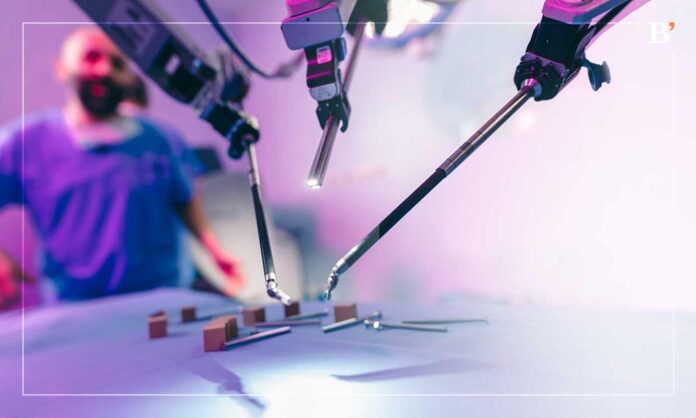Key Highlights
- Robotic cancer surgeries are like lifesavers with the emergence of robots in the medical industry.
- The benefits of robotic cancer surgery include reduced risk of complications, improved quality of life, and increased patient satisfaction.
With the advent of robotics in the medical industry, especially in the field of surgery, robotic cancer surgeries are proving to be lifesavers. They are helping surgeons achieve unprecedented precision and eliminate rogue cells from a patient’s body, making cancer surgeries safe and successful.
How Are Robots Used In Surgery?
One of the main aspects of robotic surgery is the robotic console, which serves as a minimally invasive interface. While its wide usage extends to non-cancer surgeries like removing kidney stones or gall bladder stones, it dramatically impacts cancer surgeries.
Stages of Cancer Treatment
Cancer treatment involves multiple stages, including:
- Chemotherapy
- Radiation treatment
- Surgical operations.
For cancer patients to undergo all these treatments, they need to recover quickly, which can be challenging due to their lowered immunity. Robotic surgery addresses this issue by reducing blood loss and minimizing incisions, leading to more accessible and faster recovery.
Benefits of Robotic Cancer Surgery
Robotic cancer surgery offers several advantages over traditional open surgery. Those include:
- Increased precision: Robotic arms are controlled by surgeons using a computer console that allows for greater precision and control than is possible with traditional surgical instruments. It can lead to better outcomes for patients like reduced blood loss, shorter hospital stays, and faster recovery times.
- Improved visualization: Robotic cameras help surgeons with a 3D view of the surgical field and be able to better identify and target tumors. This can also help in reducing the risk of damaging healthy tissue.
- Less pain and scarring: Robotic surgeries are typically less invasive than traditional open surgeries. Patients experience less pain and scarring. It can lead to a faster and more comfortable recovery.
As technology advances, robotic surgery is becoming increasingly common for cancer treatment. It is also used to treat various types of cancer like breast, colorectal, lung, and gynecological cancers.
Other Additional Benefits
Other benefits of robotic cancer surgery include the following:
- Reduced risk of complications
- Improved quality of life
- Increased patient satisfaction
For certain types of cancers that affect visible parts of the body, such as neck or face cancer, open surgeries can leave substantial scars, causing psychological stress for patients. With their minimally invasive approach, robotic surgeries can help alleviate this concern.
By utilizing smaller incisions and advanced robotic instruments, surgeons can perform precise procedures while minimizing visible scarring, providing patients with physical and psychological relief.
FAQs
- How are robots used in surgery?
Robots are used in surgery through a robotic console that serves as a minimally invasive interface. Surgeons control robotic arms using a computer console, allowing for greater precision and control during the procedure.
- What are the benefits of robotic cancer surgery?
The benefits of robotic cancer surgery include increased precision, control, visualization, less pain and scarring, reduced risk of complications, improved quality of life, and increased patient satisfaction.
- Are robotic cancer surgeries safe and successful for patients?
Yes, they are safe and offer many advantages over traditional open surgery.
- What is robotic surgery?
Robotic surgery is a minimally invasive surgical technique that uses a robotic arm to perform surgery.
- Why is robotic surgery bad?
Robotic surgery is not bad. It has many advantages over traditional open surgery, but there are some potential risks associated with it, such as increased cost and limited availability.




